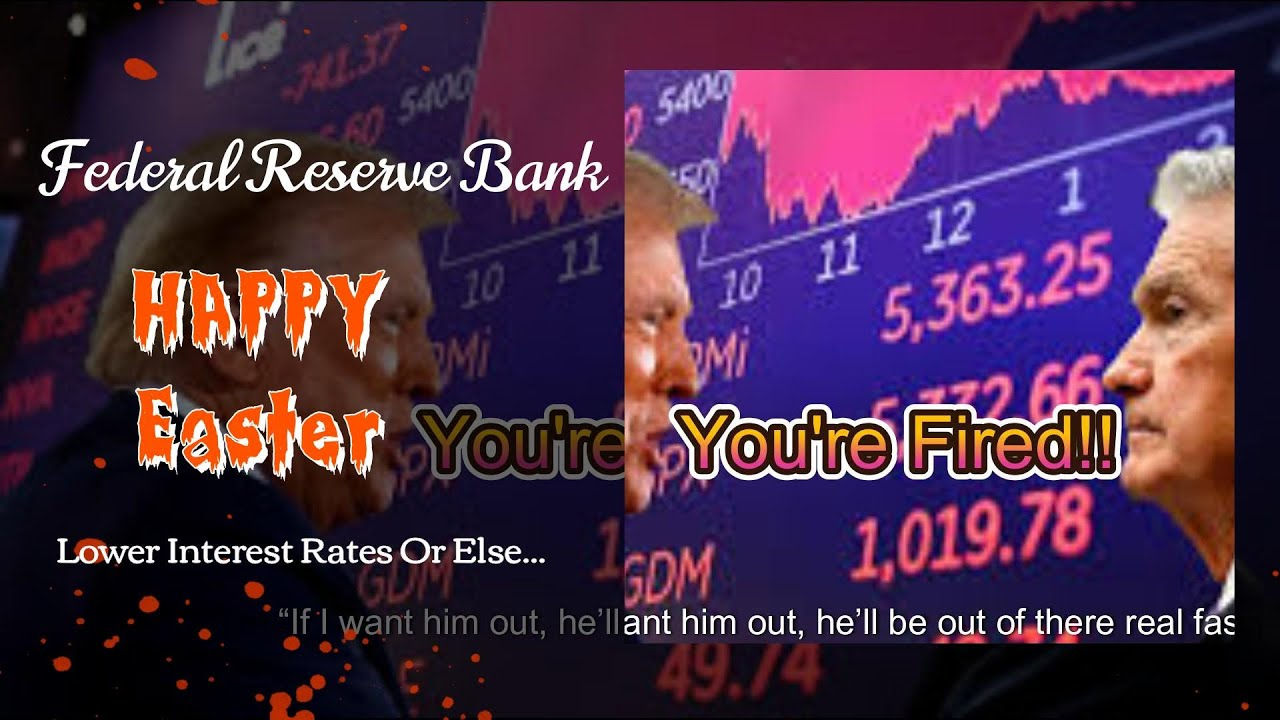The Trump Federal Reserve has been a focal point of contention during President Trump’s administration, particularly concerning his relationship with Federal Reserve Chair Jerome Powell. Many criticized Trump’s economic policies, arguing they could trigger inflation and slow growth, leading to a delicate balancing act for the Fed. The economic impact of Trump’s decisions has left markets jittery, especially as he threatened to oust Powell before his term ended. Investors closely monitored the Federal Reserve independence amid fears that political influence could disrupt monetary policy, especially around interest rates and inflation. As discussions about the future of the Fed continue, its pivotal role in shaping economic stability remains at the forefront.
The current discourse surrounding the Federal Reserve under Trump reveals a complex interplay between presidential authority and central bank autonomy. Known for his contentious stance on financial matters, Trump has repeatedly expressed frustration with Powell’s policies, reflecting broader concerns about the Fed’s role in managing the economy. This issue raises fundamental questions about the independence of the Federal Reserve and the implications of potential interventions from the executive branch. As the economic ramifications of administration policies unfold, the dialogue around leadership at the Fed illustrates the critical relationship between governance and monetary policy, particularly as it relates to interest adjustments and inflation management. With the looming uncertainty of Fed leadership, the market’s reaction underscores the importance of operational continuity within this vital institution.
The Power Dynamics of the Federal Reserve and Trump
The relationship between the U.S. President and the Federal Reserve is often marked by complexities and historic tensions. President Trump’s interaction with Chairman Jerome Powell illustrates this dynamic clearly, particularly when it concerns monetary policy decisions. Trump’s frequent criticisms of Powell stem from a perceived need for more aggressive monetary stimulus, especially in the face of slowing economic growth. His apprehensions about Powell’s role highlight the delicate balance between the executive branch’s authority and the Federal Reserve’s independence, emphasizing the necessity of maintaining a separation of powers to ensure prudent economic governance.
Critics argue that Trump’s desire to control the Fed’s policies could disrupt market stability. The Federal Reserve needs credibility to effectively manage inflation and promote economic growth, a function that could be jeopardized by perceived political interference. If Trump were to successfully fire Powell or pressure the Fed into more accommodative policies, it could lead to long-term damage in public trust towards the central bank. This scenario poses significant risks, as historically, a lack of Federal Reserve independence can lead to inflationary pressures and ultimately result in detrimental economic impacts.
Jerome Powell’s Role in Federal Reserve Independence
Jerome Powell’s tenure as Federal Reserve chairman has been characterized by his focus on upholding the Fed’s independence amidst political pressures. Powell, who was initially appointed by Trump, has often navigated the choppy waters of criticism, striving to maintain a steady hand on monetary policy. His approach has come under scrutiny, especially when addressing the interplay between interest rates and inflation. Powell’s commitment to transparent communication about the Fed’s decision-making process underscores the importance of independence in fostering a reliable economic environment.
If Trump were to pursue the ousting of Powell, the implications would be significant. Legal debates surrounding the president’s ability to remove a Fed chair without cause could stir uncertainty in both markets and the banking sector. Such actions could undermine the foundational ethos of the Federal Reserve, which is designed to operate free from direct political influence. An erosion of that independence could compromise Powell’s efforts to manage inflation effectively, ultimately leading to increased volatility in interest rates that could ripple through the economy and affect everyday Americans.
The Implications of Interest Rates and Inflation Management
Interest rates serve as a critical tool for the Federal Reserve in managing the economy, directly influencing inflation and growth rates. The careful balance the Fed aims to strike is complicated by external pressures, especially from a sitting president who desires looser monetary policy for immediate economic boosts. Under Powell’s leadership, the Fed has attempted to maintain a target inflation rate of around 2%, an essential standard that seeks to foster stable economic conditions and avoid overheating the economy.
However, Trump’s persistent calls for lower interest rates reflect a fundamental misunderstanding of the long-term economic implications these decisions can carry. While lower rates may seem beneficial in the short term, they risk igniting inflation significantly if not managed prudently. Investors and analysts worry that if political motivations override economic fundamentals, it could lead to adverse market reactions such as rising interest rates on long-term bonds, complicating the economic landscape and heightening fears of a recession.
Market Reactions to Possible Fed Chair Removal
The prospect of President Trump removing Jerome Powell from his position raises alarm bells throughout financial markets. Such an act would signal uncertainty regarding the Federal Reserve’s guidance on monetary policies, causing traders and investors to recalibrate their expectations aggressively. Historically, the stability of leadership within independent agencies like the Fed has reassured investors regarding future economic trajectories, fostering confidence in sustained growth and moderate inflation.
If Trump were to act on his threats, analysts predict that markets would react negatively almost immediately, potentially resulting in a sell-off that impacts broader economic conditions. Investors might hitch their fears to the notion that any removal is aimed at implementing a more lenient monetary policy that disregards inflationary risks. Hence, the mere speculation of Trump’s ability to influence Fed leadership could yield immediate shifts in investment strategies and capital allocation across the economy, further complicating the economic outlook.
Legal Foundations of Federal Reserve Leadership and Independence
The debate over whether President Trump can legally remove Jerome Powell hinges on interpretations of the Federal Reserve Act and subsequent constitutional implications. The 1913 Federal Reserve Act allows for governors to be removed for cause, but it remains unclear whether this provision applies to the chair, a distinction that has fueled legal discussions regarding executive authority. Given recent Supreme Court decisions that challenge long-standing norms regarding ‘for cause’ protections in independent agencies, the implications of attempting to oust Powell could lead to a significant legal showdown.
If courts determine that the president wields such power, it could redefine the power dynamics between the executive branch and the Federal Reserve. The consequences of such a ruling could spark debates over the constitutionality of Federal Reserve governance, straining the perceived independence necessary for sound economic policy. Ultimately, any attempt to challenge Powell’s position could have profound implications not only for the Federal Reserve itself but also for the broader principle of institutional independence in facing political pressures.
The Economic Impact of Trump’s Financial Policies
President Trump’s approach to economic governance has frequently been characterized by an aggressive stance on tariffs and trade agreements aimed at promoting American businesses. However, the broader macroeconomic consequences of these policies, as articulated by Powell, suggest potential headwinds in terms of inflationary pressures and growth rates. Debates among economists continue regarding the sustainability of Trump’s policies, particularly as they interface with the Federal Reserve’s mandates.
The fallout from such policies is multifaceted, impacting various sectors differently. For instance, heightened tariffs can lead to increased costs for consumers and businesses alike, exacerbating inflation risks. If coupled with policy shifts at the Fed — particularly if Trump were to gain more influence over leadership decisions — the interplay between fiscal and monetary policy becomes crucial for understanding future economic outcomes. Investors must navigate these complex dynamics, closely monitoring both the actions of the Trump administration and the Federal Reserve’s responses.
Understanding the Concept of ‘For Cause’ in Federal Employment
The concept of ‘for cause’ removal in federal positions revolves around the premise that appointed officials can only be dismissed under specific circumstances that warrant such action, protecting them from arbitrary dismissals. This principle has been crucial in maintaining the integrity of independent agencies like the Federal Reserve. Understanding how this framework applies to current political contexts involving extraordinary figures like President Trump and Jerome Powell is essential to grasping the potential ramifications of executive actions on monetary policy.
Emerging legal interpretations challenge the robustness of the ‘for cause’ clause, especially as recent rulings indicate a shift toward broader interpretations of executive authority. As such, the significance of this legal framework remains under scrutiny. Should Trump test these boundaries, the legal precedents set could redefine the boundaries of executive power, complicating the longstanding principles that serve as safeguards for the operational autonomy of the Federal Reserve and similar entities.
Future Directions for Federal Reserve Leadership
Peering into the future, the trajectory of Federal Reserve leadership will likely hinge on the interplay of political ideologies and the pressing economic realities at hand. The ongoing discussions surrounding Jerome Powell’s tenure signal a broader conversation about the expectations and responsibilities that accompany the role of Fed Chair. Observers are particularly concerned about how the dynamics might shift should Trump successfully appoint a successor who aligns more closely with his economic philosophies.
A significant consideration for future leadership is whether an incoming chair would prioritize short-term economic growth over long-term stability and inflation control. This consideration remains paramount as financial markets continue to react to shifts in policy and political narratives. The market’s trust in the Federal Reserve is integral to its success, and any disruption could lead to heightened volatility, necessitating an overarching understanding of the implications of leadership changes on both domestic and global economic landscapes.
The Relationship Between Market Trust and Federal Reserve Independence
Market trust in the Federal Reserve is not just about transparency; it is deeply rooted in the perception of its independence from political machinations. When Trump expresses intentions to influence or dismiss Jerome Powell, the direct implication is that investors start to question the Fed’s commitment to its dual mandate of fostering maximum employment and stable prices. This erosion of trust can dramatically alter investor behaviors, resetting risk appetites across various asset classes.
As the Fed navigates these complexities, its ability to independently set policy will be closely observed. Economic forecasts rely heavily on market stakeholders’ belief in the credibility of the Fed’s framework. If Trump’s administration undermines this credibility, it could lead to significant fluctuations in financial markets, reinforcing the need for strong institutional integrity. Ultimately, the continuously evolving landscape surrounding the Trump Federal Reserve exemplifies the necessity for maintaining boundaries that protect economic governance from the immediate pressures of political interests.
Frequently Asked Questions
Can Trump remove Federal Reserve Chairman Jerome Powell?
While President Trump has the authority to appoint the Federal Reserve Chairman, removing him is not straightforward. The Federal Reserve Act allows for removal ‘for cause,’ but it’s unclear if that applies to the chair’s four-year term. Any attempt to oust Powell could lead to significant market turmoil and questions about the Fed’s independence.
What impact did Trump have on interest rates and the Federal Reserve?
During his term, President Trump’s administration often clashed with Fed Chairman Jerome Powell over interest rates. Trump criticized Powell for not being aggressive enough in lowering rates to stimulate economic growth. This tension raised concerns about the independence of the Federal Reserve and its ability to manage inflation effectively.
How does the economic impact of Trump relate to the Federal Reserve’s policies?
The economic policies introduced during Trump’s presidency, including tax cuts and tariffs, influenced the Federal Reserve’s decision-making. The Fed had to consider these factors when setting interest rates and managing inflation, often leading to conflicting views between Trump and Powell regarding the best course for monetary policy.
Why is Federal Reserve independence important in the context of Trump and Powell?
Federal Reserve independence is crucial for maintaining credibility and stability in monetary policy. If President Trump were to oust Powell, it could undermine that independence, causing market instability and potentially leading to higher inflation. This independence allows the Fed to focus on long-term economic health rather than short-term political pressures.
What would happen to the economy if Trump ousted Powell?
If Trump were to remove Powell, the markets would likely react negatively, as such a move could signal a shift to a more accommodative monetary policy aimed at immediate economic growth. This could raise concerns about inflation, resulting in higher long-term interest rates and shaking market confidence in the Fed’s ability to manage the economy effectively.
| Key Point | Summary |
|---|---|
| Trump’s Relationship with Powell | President Trump’s contentious relationship with Fed Chairman Jerome Powell includes disagreements over monetary policy and interest rates. |
| Firing Powell | While Trump hinted at possibly ousting Powell, analysts warn that it would undermine the Fed’s independence, which is protected by law. |
| Legal Interpretations | The legal authority of the president to remove a Fed chair hinges on interpretations of the Federal Reserve Act and recent Supreme Court decisions. |
| Market Reactions | The potential removal of Powell creates significant market uncertainty, leading to fears of increased inflation and longer-term interest rates. |
| Impact of Fed Independence | Maintaining the Fed’s independence allows it to focus on medium-term economic stability and inflation control, rather than political pressures. |
| Consensus Building | The Fed Chair’s role involves building consensus on monetary policy within the Federal Open Market Committee (FOMC), contrary to earlier perceptions of unilateral control. |
Summary
The Trump Federal Reserve has been marked by a fraught relationship between President Trump and Fed Chairman Jerome Powell, characterized by significant disagreements over monetary policy and interest rates. Despite Trump’s occasional threats to fire Powell, legal experts suggest that such an action could jeopardize the Federal Reserve’s independence and trigger negative market reactions, particularly as the administration leans towards looser monetary policies. This situation raises critical questions about the balance of power between the executive branch and independent agencies like the Fed, impacting not just economic growth but also inflation expectations in the broader economy.









